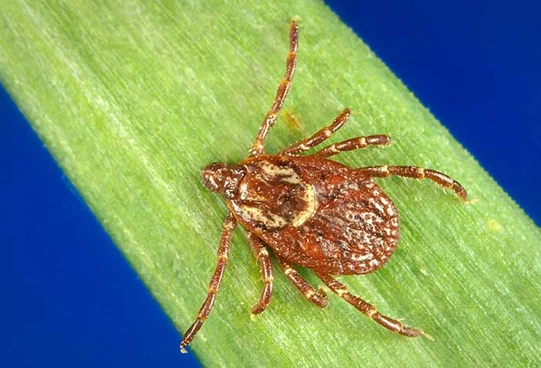
Ticks in Maine
Ticks are a growing problem in Maine but understanding them will give you an advantage.
According to the Maine Medical Center, there have been 16 species of ticks identified in the state of Maine. These ticks are listed below. Although there are a great deal of ticks that have been discovered in Maine, the most common are the American Dog Tick, the Black Legged Tick (aka Deer Tick) and the Woodchuck Tick.
Ticks are in the class Arachnida along with spiders, scorpions, mites and more. Ticks are ectoparasites.
Ecto = external. Parasite = an organism living in or on another organism in order to obtain nutrients, grow, or multiply often in a state that directly or indirectly harms the host
Ticks have four stages in their development cycle. Egg, larva , nymph and adult. Larvae hatch from the eggs in the spring and search for a host to feed upon. This is usually a mouse, chipmunk or similar sized small mammal. The larva will then wait until the following spring to molt into a nymph. Nymphs will normally feed during the summer on small mammals including pets, or humans. These nymphs will then molt into adults during the fall. Both male and female ticks will quest for a larger mammal to feed and mate on before the males fall off and die and the female falls off and begins egg production.
Tick Activity, Risk and Management
Reports of tick activity begin when the snow melts and temperatures reach the upper 40s. Tick activity is often reported when you might still see snow on the ground in places. Finding a host is completed by a process called “questing” where they climb blades of grass or similar vegetation and reach their legs out to latch onto an animal or person traveling by. Ticks can sense the CO2 when a mammal gets near.
Ticks need moisture to survive and tend to stay in shaded areas or under leaves to prevent drying out in the sun. Keeping your yard free of leaves, pine spills and grass clippings as well as leaving your grass grow being overgrown can help make your yard inhospitable for ticks. During the warmest parts of the day, ticks will climb down from the top of vegetation to the ground where the humidity tends to be higher.
Ticks are of special concern because the are vectors of human disease. In Maine, the most commonly observed tick borne illnesses are Lyme Disease, Anaplasmosis and Babesiosis. More rarely reported in Maine are Borrelia miyamotoi disease and Powassan encephalitis.
Tick management in Maine usually involves broadcast pesticide applications of pyrethroid insecticide/acaricide or less often, insecticides comprised largely of botanical oils. Other options include ticks boxes or tick tubes that use pyrethroid impregnated cotton balls that target small rodents which use the cotton balls as nesting material and apply themselves with the preventative pesticide in the process.
Tick boxes work in a similar way using non-toxic bait to lure mice and chipmunks into a box and in the process, coating the top of the rodent with a dose of fipronil (phenylpyrazole family, also found in Frontline pet treatment). Both the tick tubs and tick boxes target tick larvae and nymphs as they are most likely to be feeding on a mouse or chipmunk. For that reason, it has a generational effect and are expect to reach optimal levels of control from the second and third years of use and beyond.
Ticks Documented To Have Been Found In Maine:
· Deer Tick 0r Black Legged Tick (Ixodes scapularis)
· Woodchuck Tick (Ixodes cookei)
· Squirrel Tick (Ixodes marxi)
· Mouse Tick (Ixodes muris)
· Vole Tick (Ixodes angustus)
· American Dog Tick (Dermacentor variabilis)
· Moose Tick (Dermacentor albipictus)
· Rabbit Tick (Haemaphysalis leporispalustris)
· Lone Star Tick (Amblyomma americanum)
· Brown Dog Tick (Rhipicephalus sanguineus)
· Ixodes brunneus
· Ixodes dentatus
· Ixodes uriae
· Ixodes gregsoni
· Haemaphyhysalis chordeilis
· Ixodes banksi
